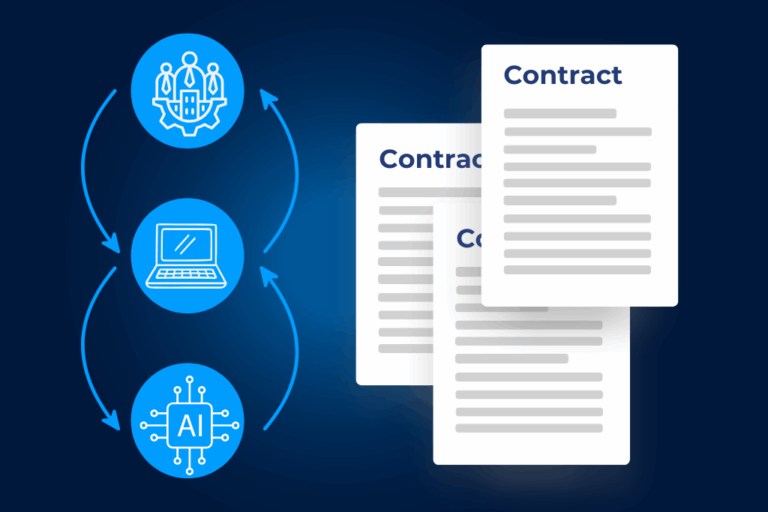Legal Design applies human-centered design principles to legal information, making complex documents and processes clearer, more accessible, and user-friendly. By prioritizing clarity, visual communication, and inclusivity, Legal Design enhances compliance, efficiency, and stakeholder trust. Leveraging digital tools and AI, organizations can streamline legal workflows, reduce risks, and improve decision-making—transforming legal operations into more effective, user-focused services.
Complex legal language and dense documentation often make it difficult for organizations to communicate obligations clearly and effectively. Legal Design offers a solution by bridging the gap between complex legal concepts and user comprehension. This innovative approach transforms how legal information is presented, making it more accessible and actionable for everyone involved. For legal departments and governance professionals, Legal Design represents an opportunity to enhance efficiency, improve compliance, and strengthen stakeholder relationships.
What is Legal Design?
Legal Design combines legal expertise with design principles to create more effective legal documents, services, and systems. It applies human-centered design methodologies to legal challenges, focusing on the needs of the people who interact with legal information.
Unlike traditional legal approaches that often prioritize comprehensive detail over clarity, Legal Design emphasizes user experience. It transforms dense, technical legal language into clear, accessible content without sacrificing accuracy or compliance.
The field has evolved significantly over the past decade, with pioneers like Margaret Hagan, Executive Director of the Stanford Legal Design Lab, helping to establish it as a recognized discipline within the legal profession. Today, Legal Design is increasingly recognized as essential for modern legal departments seeking to improve how they communicate and deliver services.
The Core Principles of Legal Design
Legal Design is built on several fundamental principles that guide its application across different contexts.
User-Centered Approach
At its heart, Legal Design puts the user first. This means understanding who will be interacting with legal information and what their specific needs, capabilities, and goals are. By starting with user research, legal professionals gain insights that help them create more effective solutions.
Clarity and Visual Communication
Legal Design emphasizes clarity through both language and visual elements. Complex concepts are broken down into understandable components, and visual aids such as diagrams, icons, and flowcharts help users grasp relationships and processes more intuitively.
Accessibility and Inclusivity
Good Legal Design ensures that legal information is accessible to everyone who needs it, regardless of their background, expertise, or abilities. This includes considerations for language barriers, cognitive differences, and varying levels of legal literacy.
Benefits of Implementing Legal Design
Organizations that incorporate Legal Design into their legal processes experience numerous advantages.
Enhanced Understanding and Compliance
When legal documents and processes are designed with users in mind, people are more likely to understand their rights and obligations. This leads to better compliance with rules and regulations, reducing risk for the organization.
Improved Efficiency and Cost Reduction
Clear, well-designed legal documents and processes require less time to explain and generate fewer questions. This translates to time savings for legal teams and reduced costs associated with misunderstandings or errors.
Strengthened Trust and Relationships
When clients and stakeholders can easily understand legal information, it builds trust and improves relationships. This is particularly valuable for maintaining long-term business partnerships and client satisfaction.
Practical Applications of Legal Design
Legal Design can be applied across numerous areas within an organization:
Legal Design in the Digital Age
Technology plays a crucial role in enabling effective Legal Design implementation. Digital tools support the creation, distribution, and management of well-designed legal content and processes.
Digital Solutions Enabling Legal Design
Modern governance platforms provide the infrastructure needed to implement Legal Design at scale. These systems centralize legal information, standardize processes, and offer collaboration features that make it easier to create and maintain well-designed legal content.
Secure digital environments allow legal teams to share redesigned documents with stakeholders while maintaining appropriate access controls and version management. This ensures that the benefits of Legal Design can be realized without compromising security or compliance.
AI and Automation in Legal Design
Artificial intelligence enhances Legal Design by analyzing document complexity, suggesting simplifications, and even generating visual representations of legal concepts. As these technologies advance, they will increasingly support legal professionals in creating more effective, user-centered legal materials.
Getting Started with Legal Design
Implementing Legal Design within an organization requires a structured approach.
Assessment and Prioritization
Begin by identifying areas where improved legal design would have the greatest impact. This might include frequently used contracts, customer-facing documents, or internal processes that currently cause confusion or delays.
Building Skills and Resources
Develop Legal Design capabilities within your team through training and resources. This might involve workshops on visual thinking, plain language writing, or user research methods.
Iterative Implementation
Start with small projects and refine your approach based on feedback. Legal Design is an iterative process: each implementation provides learning opportunities that improve future efforts.
The Future of Legal Innovation
As organizations continue to digitalize their operations, Legal Design will become increasingly important. The integration of design thinking with legal expertise represents a fundamental shift in how legal services are delivered and experienced.
Forward-thinking legal departments are already embracing this approach, recognizing that making legal information more accessible and understandable is not merely about aesthetics, it’s about effectiveness, efficiency, and ultimately, better outcomes for all stakeholders.
The future will likely see greater standardization of Legal Design practices, more specialized tools to support implementation, and increased expectation from clients and stakeholders that legal information be presented in user-friendly formats.
Transforming Legal Practice Through Design
Legal Design represents a significant opportunity for legal departments to enhance their value within organizations. By making legal information more accessible and actionable, legal professionals support better decision-making, improve compliance, and strengthen relationships with stakeholders.
The application of design principles to legal challenges does not diminish legal rigor: rather, it amplifies the impact of legal expertise by ensuring it can be effectively understood and applied. As businesses continue to navigate complex regulatory environments, those that embrace Legal Design will gain advantages in efficiency, compliance, and stakeholder satisfaction.
For organizations seeking to optimize their legal operations, incorporating Legal Design principles into their governance approach offers a path to more effective, user-centered legal services that better support overall business objectives.act data while enabling efficient, effective contract management.


